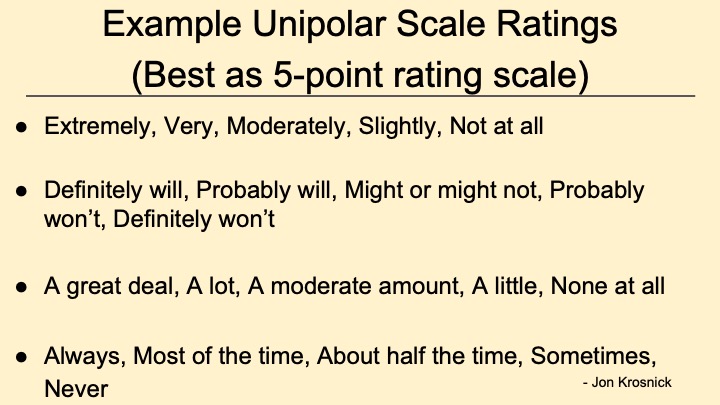Overview
The following is a viewer guide and key points shared by Dr. Mele Wheaton of Stanford University’s Woods Institute for the Environment. Dr. Wheaton presented on key characteristics of creating surveys at the 2020 School Garden Support Organization Leadership Institute. She referenced survey examples from attending SGSOs. The user guide below is meant to outline key elements of her presentation (which has poor audio/visuals). Click the youtube links for short clips from her presentation.

















